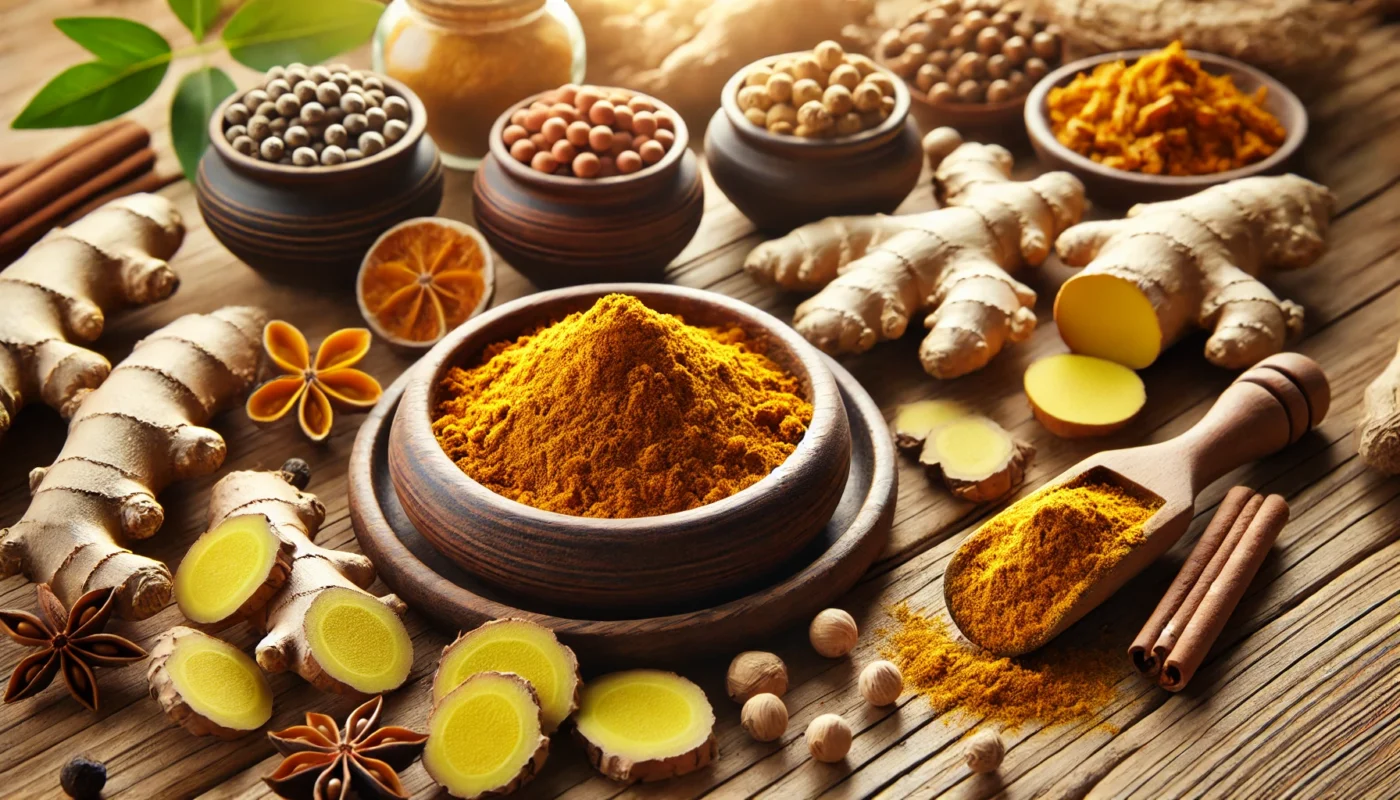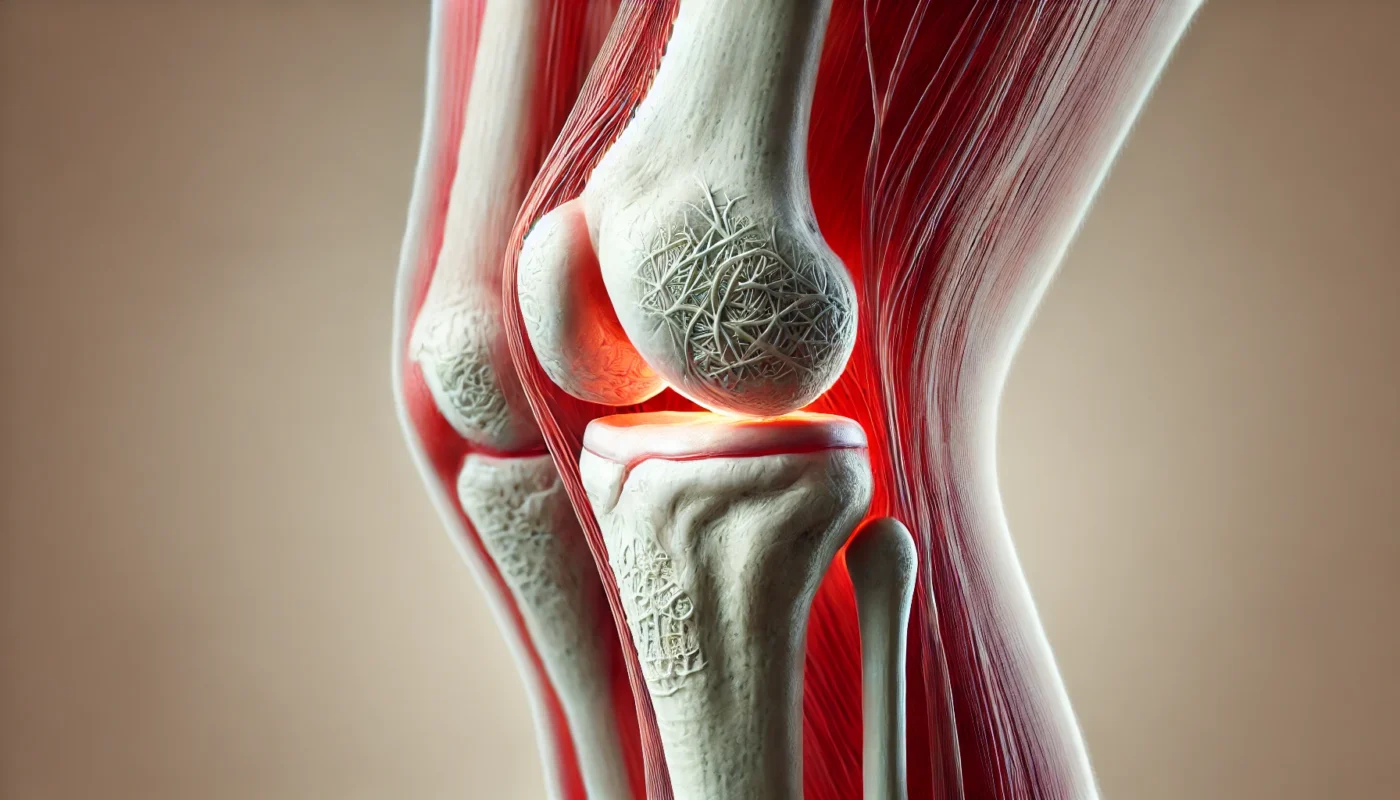Before diving into solutions, it’s essential to understand what joint inflammation is. Joint inflammation, or arthralgia, is characterized by swelling, pain, and stiffness in the joints. It can result from various causes, including autoimmune disorders, injuries, or general wear and tear of the joints.
Causes of Joint Inflammation
Joint inflammation can stem from numerous sources. Autoimmune disorders such as rheumatoid arthritis involve the immune system mistakenly attacking joint tissues, leading to chronic inflammation. Injuries, whether acute or repetitive, can damage joint structures and spark an inflammatory response. Additionally, general wear and tear, common in osteoarthritis, results from the gradual breakdown of cartilage, leading to inflammation.
Symptoms and Diagnosis
Recognizing the symptoms of joint inflammation is vital for early intervention. Common symptoms include joint pain, swelling, stiffness, and reduced range of motion. Diagnosing joint inflammation often involves a combination of physical examinations, medical history reviews, and imaging tests like X-rays or MRIs. Blood tests may also be conducted to identify markers of inflammation or rule out specific autoimmune conditions.
Impact on Quality of Life
The effects of joint inflammation extend beyond physical discomfort, significantly impacting quality of life. Chronic pain and stiffness can limit mobility and daily activities, leading to frustration and decreased independence. Moreover, the psychological toll of living with persistent joint issues can contribute to anxiety, depression, and social withdrawal, highlighting the importance of comprehensive management approaches.
You May Also Like: Managing Pain Through Dietary Choices
The Role of Diet in Joint Health
Diet plays a pivotal role in managing joint inflammation. Consuming the right foods can help reduce inflammation and promote overall joint health. Here are some dietary strategies to consider:
Foods That Help with Joint Pain
Incorporating anti-inflammatory foods into your diet can significantly alleviate joint pain. Some of the best foods for joint pain relief include:
- Omega-3 Fatty Acids: Found in fatty fish like salmon and mackerel, these healthy fats are known for their anti-inflammatory properties. Omega-3s can help reduce joint swelling and tenderness, making them a valuable addition to your diet. Studies have shown that regular consumption of omega-3-rich foods can lead to a noticeable decrease in joint pain over time.
- Berries: Rich in antioxidants, berries help reduce inflammation and protect joint tissues. Berries like blueberries, strawberries, and cherries are not only delicious but also packed with nutrients that combat oxidative stress, which contributes to inflammation. Including a variety of berries in your daily meals can aid in protecting your joints from damage.
- Leafy Greens: Vegetables like spinach and kale are packed with nutrients that support joint health. These greens are high in vitamins C and K, as well as minerals like calcium and magnesium, which are essential for maintaining bone strength and joint function. Adding a handful of leafy greens to your diet daily can provide long-term joint benefits.
- Nuts and Seeds: Almonds, walnuts, and flaxseeds provide essential nutrients that combat inflammation. These foods are rich in healthy fats, fiber, and antioxidants, which work together to reduce inflammation and support overall health. Snacking on a mix of nuts and seeds or adding them to salads and smoothies can be an easy way to incorporate them into your diet.
Foods to Avoid
Just as there are foods that alleviate inflammation, there are those that can exacerbate it. Limit your intake of:
- Processed Foods: High in trans fats and sugars, these can trigger inflammation. Processed foods often contain additives and preservatives that can irritate the immune system, leading to increased joint pain. Opting for whole, unprocessed foods can help mitigate these effects.
- Refined Carbohydrates: Such as white bread and pastries, which can increase inflammation. These foods cause spikes in blood sugar levels, promoting inflammatory responses in the body. Replacing refined carbs with whole grains like brown rice or quinoa can help maintain stable blood sugar levels and reduce inflammation.
- Excessive Alcohol and Caffeine: While moderate consumption may not pose a threat, excessive intake can lead to dehydration and inflammation. Alcohol and caffeine can deplete essential nutrients needed for joint health, exacerbating inflammation. Limiting these substances and ensuring adequate hydration can support joint function.

Lifestyle Modifications for Joint Health
Apart from dietary changes, several lifestyle modifications can aid in reducing joint inflammation and promoting overall joint health.
Regular Physical Activity
Engaging in regular exercise is essential for maintaining healthy joints. Low-impact activities like swimming, cycling, and yoga can improve flexibility and reduce stiffness without putting excessive strain on the joints.
- Types of Exercises: Incorporating a mix of aerobic, strength, and flexibility exercises can be beneficial. Aerobic exercises, such as walking or water aerobics, enhance cardiovascular health and maintain joint mobility. Strength training can help build muscle to support and stabilize joints, while flexibility exercises like stretching or tai chi can increase range of motion and reduce stiffness.
- Exercise Frequency: Consistency is key when it comes to exercising for joint health. Aim for at least 150 minutes of moderate aerobic exercise per week, along with two days of strength training. Breaking down workouts into shorter sessions throughout the week can make it easier to stick with a routine.
- Listening to Your Body: It’s important to listen to your body’s signals during exercise. If you experience increased pain or discomfort, modify the activity to avoid exacerbating joint issues. Consulting with a physical therapist can provide personalized exercise recommendations to suit your specific needs.
Weight Management
Maintaining a healthy weight is crucial for reducing stress on the joints. Excess body weight puts additional pressure on weight-bearing joints, leading to increased pain and inflammation.
- Understanding BMI and Joint Health: Body Mass Index (BMI) is a useful tool for assessing whether you are at a healthy weight. A higher BMI increases the risk of developing joint problems, particularly in the knees and hips. Keeping your BMI within a healthy range can alleviate stress on these joints.
- Strategies for Weight Loss: Adopting a balanced diet and regular exercise routine can promote sustainable weight loss. Focus on consuming nutrient-dense foods while reducing caloric intake. Simple changes, like portion control and mindful eating, can make a significant impact over time.
- The Role of Muscle Mass: Building muscle can contribute to weight management and joint support. Muscle tissue burns more calories at rest compared to fat tissue, aiding in weight maintenance. Strengthening the muscles around your joints can also provide better support and reduce strain.
Adequate Hydration
Staying hydrated is vital for lubricating joints and preventing stiffness. Ensure you drink enough water throughout the day to support joint function.
- Benefits of Hydration: Adequate hydration helps maintain the synovial fluid that cushions joints, reducing friction and wear. Water also assists in nutrient transport and waste removal, supporting overall joint health.
- Daily Water Intake: A general guideline is to drink at least eight 8-ounce glasses of water per day, but individual needs may vary based on activity level and climate. Listening to your body’s thirst signals and adjusting your intake accordingly can ensure optimal hydration.
- Hydration Beyond Water: While water is the best choice for hydration, other fluids like herbal teas and infused waters can also contribute. Eating water-rich foods, such as cucumbers and watermelon, can further enhance your hydration efforts.

Holistic Approaches to Joint Inflammation
In addition to conventional methods, several holistic approaches can provide relief from joint inflammation.
Herbal Supplements
Certain herbal supplements have shown promise in reducing joint inflammation. Some popular options include:
- Turmeric: Known for its active compound curcumin, turmeric has potent anti-inflammatory effects. Curcumin can inhibit molecules that cause inflammation, making it a popular natural remedy. Incorporating turmeric into your diet through curries or golden milk can provide joint benefits.
- Ginger: Its anti-inflammatory properties can help alleviate joint pain and stiffness. Ginger contains compounds that block inflammatory pathways, offering relief similar to non-steroidal anti-inflammatory drugs (NSAIDs). Adding fresh ginger to smoothies or using it in cooking can be an easy way to include it in your diet.
- Boswellia: Also known as Indian frankincense, Boswellia is another supplement that may reduce inflammation. Research suggests that it can improve joint function and decrease pain, particularly in osteoarthritis patients. Boswellia can be taken in capsule form or as a topical cream for targeted relief.
Mind-Body Practices
Mind-body practices such as meditation, tai chi, and acupuncture can help reduce stress and promote relaxation, which in turn can ease joint inflammation.
- Meditation and Mindfulness: Practicing meditation and mindfulness can reduce stress hormones that contribute to inflammation. Techniques like deep breathing and visualization can improve mental well-being and provide pain relief. Setting aside a few minutes each day for meditation can have a profound impact on joint health.
- Tai Chi and Yoga: These gentle exercises combine movement with mindfulness, enhancing flexibility and balance. Tai chi and yoga can improve joint function and decrease pain through controlled movements and stretches. Joining a class or following online tutorials can help you incorporate these practices into your routine.
- Acupuncture: An ancient practice involving the insertion of thin needles into specific points on the body, acupuncture can stimulate healing and reduce pain. It is believed to enhance the body’s natural painkillers and improve blood flow, offering relief from joint inflammation. Seeking a qualified acupuncturist can ensure safe and effective treatment.
Scientific Research on Joint Health
Understanding the scientific research behind joint inflammation and its management is crucial for making informed decisions about your health. Recent studies have shown that a combination of dietary changes, exercise, and holistic approaches can significantly improve joint health and reduce inflammation.
Evidence-Based Nutritional Interventions
Research indicates that a diet rich in anti-inflammatory foods, such as those mentioned earlier, can lower markers of inflammation in the body. Studies have also highlighted the role of omega-3 fatty acids in reducing joint pain and stiffness.
- Clinical Trials on Diet and Inflammation: Numerous clinical trials have demonstrated the effectiveness of specific dietary patterns in reducing inflammation. The Mediterranean diet, rich in fruits, vegetables, whole grains, and healthy fats, has been particularly successful in improving joint health. Following this diet can lead to significant reductions in inflammatory markers.
- Omega-3 Fatty Acids and Joint Function: Omega-3 supplements have been shown to decrease morning stiffness and improve joint mobility. Randomized controlled trials have confirmed that omega-3s can reduce the need for anti-inflammatory medications in individuals with arthritis. Consulting with a healthcare provider can help determine the appropriate dosage for supplementation.
- Role of Antioxidants: Antioxidants play a crucial role in combating oxidative stress, which contributes to inflammation. Foods high in antioxidants, such as berries and nuts, can protect joint tissues from damage. Incorporating a variety of antioxidant-rich foods can provide comprehensive joint support.
The Impact of Exercise on Joint Health
Exercise has been shown to improve joint function and reduce inflammation. A study published in the “Journal of Rheumatology” found that regular physical activity can decrease the risk of developing arthritis and reduce symptoms in individuals already suffering from the condition.
- Long-Term Benefits of Physical Activity: Engaging in regular exercise can lead to long-term improvements in joint health. Exercise strengthens muscles, improves balance, and enhances joint flexibility, reducing the risk of falls and injuries. Maintaining an active lifestyle can also slow the progression of joint-related diseases.
- Exercise as a Pain Management Tool: For individuals with arthritis, exercise can serve as an effective pain management strategy. Low-impact exercises can reduce pain, increase energy levels, and improve mood. Working with a physical therapist can help tailor an exercise program to your specific needs.
- The Role of Endorphins: Physical activity stimulates the release of endorphins, natural pain-relieving chemicals in the brain. These endorphins can improve mood and provide analgesic effects, making exercise a valuable component of joint inflammation management. Finding enjoyable activities can enhance adherence to an exercise routine.

Practical Tips for Managing Joint Inflammation
Implementing the following practical tips can help you manage joint inflammation effectively:
- Incorporate Anti-Inflammatory Foods: Make a conscious effort to include a variety of anti-inflammatory foods in your daily meals. Experiment with different recipes and cooking methods to keep your meals exciting and nutritious. Planning your meals ahead of time can ensure you have healthy options readily available.
- Engage in Regular Low-Impact Exercise: Find activities you enjoy that are gentle on your joints. Consider joining a group class or finding a workout buddy to stay motivated. Consistency is key, so try to incorporate movement into your daily routine, even if it’s just a short walk.
- Maintain a Healthy Weight: Set realistic weight loss goals if needed, and track your progress. Focus on making sustainable lifestyle changes rather than quick fixes. Celebrate your successes along the way to stay motivated.
- Stay Hydrated: Carry a water bottle with you to encourage regular hydration throughout the day. Infuse your water with fruits or herbs for added flavor and nutrition. Monitor your hydration levels by checking the color of your urine; it should be light yellow.
- Consider Herbal Supplements: Consult with a healthcare provider before starting any new supplements to ensure safety and effectiveness. Research reputable brands and sources for herbal supplements to ensure quality. Be patient, as natural remedies may take time to show results.
- Practice Mind-Body Techniques: Dedicate time each day for relaxation and stress reduction. Explore different mind-body practices to find what works best for you. Incorporate these practices into your daily routine to cultivate a sense of calm and well-being.
Conclusion
Joint inflammation can be a challenging condition, but with the right strategies, you can effectively manage and alleviate symptoms. By focusing on a diet rich in anti-inflammatory foods, adopting a regular exercise routine, and exploring holistic approaches, you can promote joint health and reduce inflammation. Always consult with a healthcare professional before making significant changes to your diet or lifestyle, especially if you have underlying health conditions. With these strategies, you can take proactive steps towards achieving joint inflammation relief and enhancing your overall quality of life.
Further Reading:
Arthritis pain: Do’s and don’ts
How to Reduce Joint and Arthritis Pain with Lifestyle Medicine
Best Ways to Reduce Arthritis Inflammation in Joints
joint health, inflammation management, anti-inflammatory diet, exercise for arthritis, Tai Chi, yoga, acupuncture, omega-3 fatty acids, antioxidants, holistic health, pain management, mind-body techniques, healthy lifestyle, nutrition, wellness
Important Note: The information contained in this article is for general informational purposes only, and should not be construed as health or medical advice, nor is it intended to diagnose, prevent, treat, or cure any disease or health condition. Before embarking on any diet, fitness regimen, or program of nutritional supplementation, it is advisable to consult your healthcare professional in order to determine its safety and probable efficacy in terms of your individual state of health.
Regarding Nutritional Supplements Or Other Non-Prescription Health Products: If any nutritional supplements or other non-prescription health products are mentioned in the foregoing article, any claims or statements made about them have not been evaluated by the U.S. Food and Drug Administration, and such nutritional supplements or other health products are not intended to diagnose, treat, cure, or prevent any disease.

